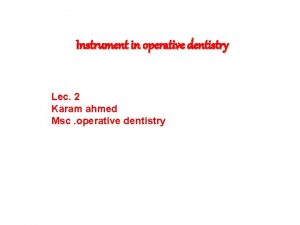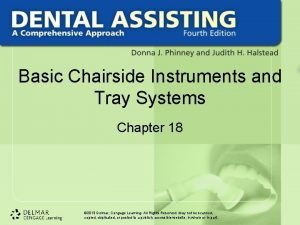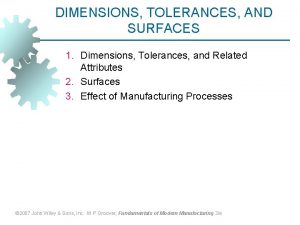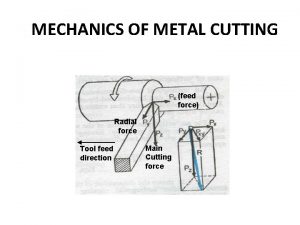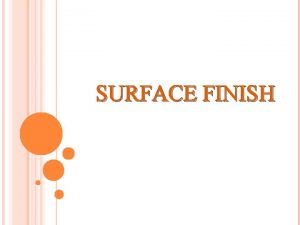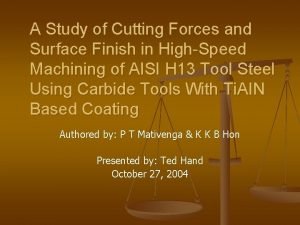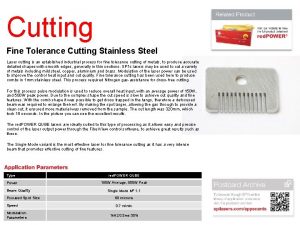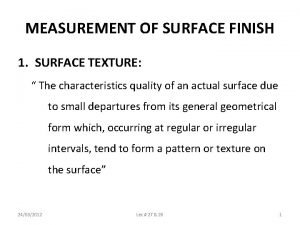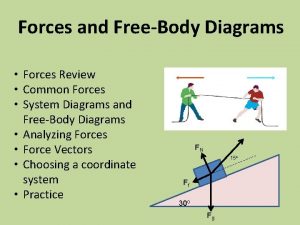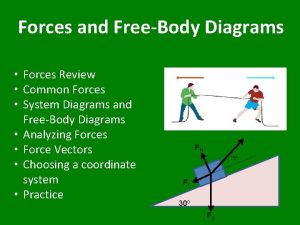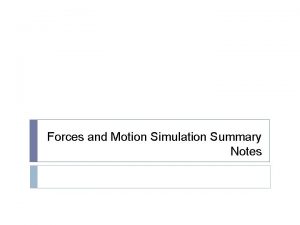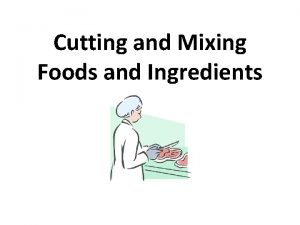A Study of Cutting Forces and Surface Finish
















- Slides: 16

A Study of Cutting Forces and Surface Finish in High-Speed Machining of AISI H 13 Tool Steel Using Carbide Tools With Ti. AIN Based Coating Authored by: P T Mativenga & K K B Hon Presented by: Ted Hand October 27, 2004

Introduction “Process improvement should not compromise but should enhance product quality. ” Purpose of the paper: Address the effects of increasing machining speeds as well as the effects of different advanced coatings on surface finish.

Background n Coatings n n Ti. C coatings n Reduce cutting T, forces, and increase abrasion resistance as well as acting as a diffusion barrier. Expand the region of machining conditions which reduces wear rates Coatings are expected to result in lower wear regions occurring at higher spindle speeds, promoting the use of HSM.

Surface Roughness n Definition: relatively closely spaced or fine surface irregularities, mainly in the form of feed marks left by the cutting tool. n Surface roughness: Ra = S 2 z / (18 x (3(D/2 + Sz. Nt/ pi)). 5) n n n D = tool diameter Sz = Vf / Nt N = chip load Nt = number of edges that advance in a revolution of the cutter N = spindle speed in r/min Vf = feed rate

Parameters Machine tool: n Mikron HSM 700 42000 r/min 12 kw spindle capable of a 20 m/min cutting feed and 40 m/min rapid feed Cutting tools: n n n 6 mm ball-nose end mills PVD coated Micrograin alloy WC 10% Co

Table 1: Geometrical properties of the ball-nose end mill used in the experiments Tool parameters Symb ol Number of flutes Valu e 2°° Helix angle λ 30° Rake angle γ 0° Shank diameter d 6 mm lt 57 m m lnorm 20 m m Cut length lc 7 mm Cutter diameter d 6 mm Corner Radius r 3 mm Overall tool length Nominal length below chuck

Table 2: Properties of PVD coatings Coating material Ti. N Ti. CN Cr. N 2 Ti. Al. N + WC/C 2300 3000 1750 3000 3500 2300 Coefficient of friction against steel (dry) 0. 4 0. 5 0. 4 0. 2 Coating thickness (μm) 1 --4 1 --5 1 --3 2 --6 Maximum working temperature (°C) 600 400 700 800 800 -1000 Microhardness (HV 0. 05

Cont. Work material: n Mid range hot work tool steel AISI H 13 Finishing operations use the following coatings: n n n Ti. N Ti. CN Cr. N Ti. Al. N 2 Ti. Al. N + WC/C Three components of the cutting forces were sampled and averaged.

Milling Strategy Table 3: Cutting parameters for AISI H 13 tool steel HSM experiments Tool diameter D 6 mm Depth of cut a . 06 mm Width of cut b . 06 mm Rapid feed Vf-rapid 10, 000 mm/min Ramp feed Vf-ramp 500 mm/min Vf 6000 mm/min Cutting feed Direction of linear interpolation x axis Direction of tool step-over y axis

Evaluation n Surface finish was evaluated using a Mitutoyo SURFTEST 301 with a cutoff value of. 8 mm and a span of. 5 mm 25 measurements taken Surface integrity studied with a optical microscope and an SEM

Results Table 4: Correlation coefficients of surface finish to cutting forces Step-over direction Fx Ti. N Fy Fz Peak Fz G 01 direction Fx Fy Fz Peak Fz 0. 83 0. 84 1. 00 0. 99 0. 81 0. 84 1. 00 0. 98 Ti. CN -0. 14 0. 90 0. 98 -0. 20 0. 87 0. 96 0. 95 Cr. N 0. 93 0. 62 0. 97 0. 89 0. 59 0. 94 Ti. Al. N 0. 42 0. 49 0. 95 0. 88 0. 44 0. 31 0. 83 0. 73 Uncoated 0. 95 0. 74 0. 95 0. 94 0. 71 0. 50 0. 57 2 Ti. Al. N -0. 09 0. 80 0. 96 -0. 09 0. 80 0. 90 0. 89 Ti. Al. N + WC/C -0. 03 0. 19 0. 35 0. 38 -0. 30 -0. 21 -0. 14 -0. 05

Graphs n Figures 2 -10 – How the surface finished is affected by the spindle speed.

Cont. n HSM with Ti. CN, Ti. N, Cr. N, single and double layered Ti. Al. N produced a better surface finish n Ti. Al. N gave the best results, but need to minimize interaction with steel n Cr. N didn’t present an advantage

Conclusions PVD tool coatings improved the surface finish compared to uncoated tools l Coatings had the smallest wear zone promoting higher cutting speeds l Higher cutting speeds and PVD coatings are pushing the frontiers in surface finishing's. l

Implications Reducing die making lead times l Cutting costs with smaller lead times l l Industries affected: l Aerospace l Precision machine labs l Auto industry l Etc.

References: l l l Edwards, R. Cutting Tools, 1993, pp. 44 -49 (The institute of Materials) ISO 368 Surface Roughness—Parameters, Their Values and General Rules for Specifying Requirements Lim, S. C. and Lim, C. Y. H. Effective use of coated tools—the least wear map approach. Surface and Coatings Technol. , 2001, 139, 127 -134. Konig, W. , Komanduri, R. , Tonshoff, H. K. and Ackershott, G. Machining of hard materials—Key Note papers. Ann. CIRP, 1984, 33(2), 417 -427. De. Vries, W. R. Analysis of Material Removal Processes, 1992, p. 138 (Springer - Verlag, Berlin). Da Silva, M. B. and Wallbank, J. Lubrication and application method in machining. Ind. Lubric. Technol. , 1998, 50(4), 149 -152
 Ordinary hatchet and enamel hatchet
Ordinary hatchet and enamel hatchet Pen grasp vs modified pen grasp
Pen grasp vs modified pen grasp Cutting and non cutting dental instruments
Cutting and non cutting dental instruments Sewing tools measuring tools
Sewing tools measuring tools Flank wear
Flank wear Bilateral tolerance
Bilateral tolerance Machining symbols
Machining symbols Friction angle in metal cutting
Friction angle in metal cutting Example of like parallel forces and unlike parallel forces
Example of like parallel forces and unlike parallel forces Contact and noncontact forces
Contact and noncontact forces Net force
Net force What is constructive force
What is constructive force The forces shown above are pushing/pulling forces
The forces shown above are pushing/pulling forces Intramolecular forces vs intermolecular forces
Intramolecular forces vs intermolecular forces Intra vs intermolecular
Intra vs intermolecular Inter vs intramolecular forces
Inter vs intramolecular forces Surface area of a cone
Surface area of a cone

